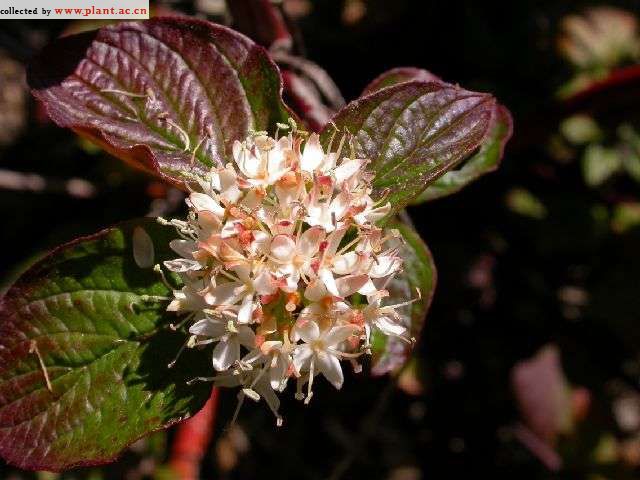Cornus alba KesselringiiTatarian dogwood
科:山茱萸科
Family:Cornaceae
属:山茱萸属
common name:Tatarian dogwood
introduce:Plant Type: Deciduous shrub
Family: Cornaceae
Missouri Native: No
Native Range: None
Height: 4 to 6 feet
Spread: 3 to 6 feet
Bloom Time: May - June
Bloom Color: Yellowish-white
Sun: Full sun to part shade
Water: Medium moisture
Maintenance: Low
General Culture:
Best grown in organically rich, medium wet, well-drained soils in full sun to part shade. Tolerant of a wide range of soils. Prefers consistently moist, well-drained soils. Trim roots with a spade and promptly remove root suckers if colonial spread is undesired. Best dark purple stem color occurs on young stems. Although pruning is not required, many gardeners choose to remove 20-25% of the oldest stems in early spring of each year to stimulate growth of new stems which will display the best red color. As an alternative to annual pruning, some gardeners prune all stems close to the ground in early spring every 2-3 years to renew. Any loss of flowers through spring pruning is not terribly significant since the small flowers of this dogwood are rather ordinary. Plants become stressed and more vulnerable to diseases such as canker in hot summer climates south of USDA Zone 7.
Noteworthy Characteristics:
慘esselringii?is a tatarian dogwood cultivar that is noted for its dark purple twigs in winter. It is a rapid-growing, multi-stemmed, suckering, deciduous shrub that grows to a maximum size of 4-6?tall on erect, usually unbranched stems. Tiny, yellowish-white flowers appear in flat-topped clusters (to 2.5?diameter) in late spring, with sparse, intermittent, additional flowering sometimes continuing into summer. Flowers give way to clusters of blue-white drupes in summer. Fruit is quite attractive to birds and is generally considered to have as much if not more ornamental interest than the flowers. Elliptic, medium/dark green leaves (to 4.5?long) turn reddish-purple in fall. Tatarian dogwood is very similar to redtwig dogwood (C. sericea/stolonifera), but generally does not spread as aggressively.
Problems:
Susceptible to leaf spot, twig and leaf blights and canker. Scale, leaf miner and borers are occasional insect pests.
Uses:
Naturalistic plantings in moist soils where plants are allowed to spread and form thickets. Property line screens. Hedges. Shrub borders. Foundations.
